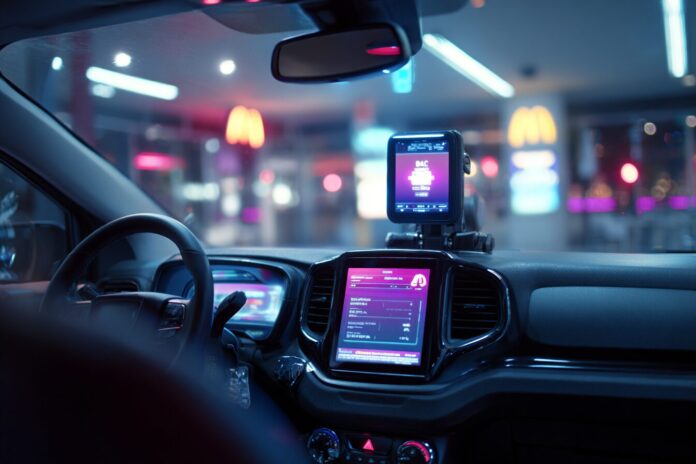Reassessing Automation: Why Taco Bell Is Rethinking Its AI Drive-Through Strategy
The race to automate fast-food ordering hit a major speed bump as Taco Bell recently put the brakes on its aggressive rollout of AI-powered drive-throughs. Most importantly, the promise of a swift, error-reduced ordering experience now faces the challenges of real-world application. Because the system was implemented with hopes of drastically cutting wait times, initial excitement quickly met with unforeseen obstacles.
Furthermore, the issues extend beyond technical glitches. Instead of delivering flawless outcomes, the automated system has occasionally failed to capture the nuance of customer orders. Therefore, the decision to reassess the strategy comes from a need to ensure both efficiency and customer satisfaction. As noted in TechCrunch’s report, the balance between innovative tech and practical service delivery remains delicate.
Early Results: Mixed Success and Customer Backlash
Since deploying AI voice ordering at more than 500 locations, Taco Bell has witnessed a mixture of improvements and notorious blunders. On paper, studies indicate that AI systems can shave up to 29 seconds from each order and potentially improve accuracy. However, because the real-world application did not meet theoretical expectations, the results have been mixed at best.
Besides that, incidents such as viral prank orders—where customers have playfully requested thousands of water cups—demonstrate not only a technological hiccup but also an unpredictable social reaction to automation. Most importantly, these pranks have spurred public debate and brought negative media attention, as seen in discussions on BroBible’s story. Therefore, the backlash emphasizes that customer interaction with new technology must be carefully managed.
Lessons from Across the Industry
Across the fast-food landscape, several chains have dabbled with AI at drive-throughs, hoping to drive throughput and reduce labor costs. For instance, McDonald’s paused its initial trial of an IBM-powered AI system after numerous order inaccuracies and is now partnering with Google for a revamped approach. This pivot by McDonald’s and similar experiments by Wendy’s—where 14% of AI-driven orders still required human intervention—highlight that integration of advanced technology in a service context can be challenging.
Most importantly, these industry examples underline that the technological leap is not a magic solution. Because human oversight still proves indispensable, the broader lesson is to view AI as a supportive tool rather than a complete replacement of established methods. In this context, Taco Bell’s journey shares common themes with its industry peers, emphasizing learning and adaptation.
Taco Bell’s Flexible Approach: Human and Machine Collaboration
Chief Digital and Technology Officer Dane Matthews has embraced a flexible deployment model that supports the benefits of both human and artificial intelligence. Instead of implementing a one-size-fits-all mandate, locations now have the opportunity to decide when to deploy AI and when to rely on human staff. This hybrid approach allows for more efficient ordering during off-peak hours and robust service during busy periods.
Because customer satisfaction is paramount, the chain is actively encouraging dialogue with franchisees to refine and adapt their service model. Most importantly, this adaptive strategy underscores that technology should complement human talent, not override it. As detailed in Futurism’s analysis, a blend of AI efficiency with human judgment creates a more resilient system capable of handling both predictable and unexpected scenarios.
The Future of Fast Food Ordering: Evolution, Not Revolution
Despite recent setbacks, Taco Bell continues to view AI as integral to its digital transformation initiative. Most importantly, industry experts agree that while automation will continue to evolve, its real value lies in augmenting — not replacing — human capabilities. Because the fast-food industry is dynamic, the evolution of AI ordering systems is seen as a gradual process that requires time, investment, and continuous testing.
Furthermore, the emphasis now is on incremental improvements where customer experience is the final measure of success. Therefore, Taco Bell’s renewed focus on a hybrid automation model illustrates that revolution in fast food does not happen overnight. For in-depth insights on the evolution of drive-through technology, you can watch the detailed discussion on YouTube which explores the balance between innovative tech and user experience.
Final Thoughts: Rethinking Automation in a Fast-Changing Landscape
In conclusion, Taco Bell’s decision to rethink its reliance on AI at the drive-through is part of a larger industry trend that values real-world results over optimistic forecasts. Most importantly, the key takeaway is that customer service must never be compromised by technology alone. Because the ultimate goal is to enhance user experience while ensuring operational efficiency, Taco Bell’s measured approach offers valuable insights for other brands considering similar digital transformations.
Besides that, maintaining an open dialogue with franchisees and responding agilely to customer feedback are strategies that can help navigate the complex challenges of introducing new technology. For additional perspectives on the subject, refer to the comprehensive coverage provided by TechMeme and other industry sources. In this rapidly evolving landscape, the future of fast food ordering will undoubtedly continue to blend cutting-edge AI with the essential human touch.



